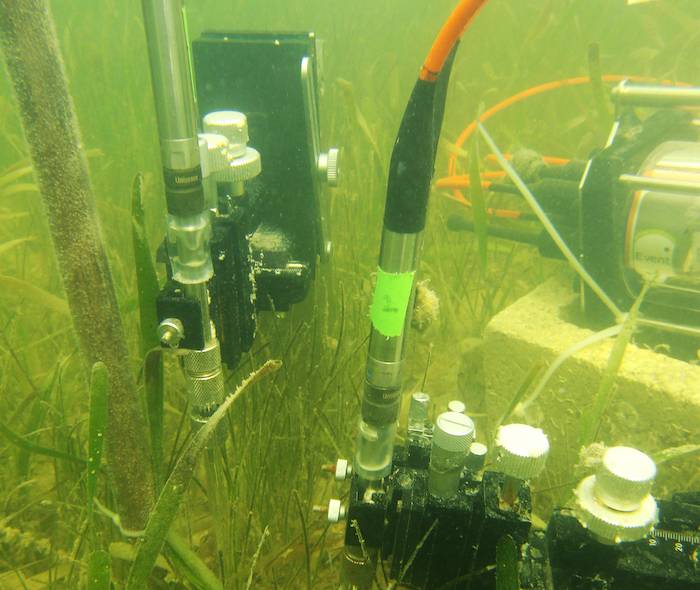

Dr. Marguerite Koch-Rose and her students study how changing ocean chemistry and increasing temperatures are affecting marine ecosystems by looking at the base of the food web: seagrasses, macroalgae (seaweed), and mangroves. Here in South Florida, these aquatic plants not only provide nutrients for a variety of organisms, but act as a nursery and critical habitat for juvenile shrimp, lobsters, rays, sharks, and fish.
Warmer temperatures can lead to less oxygen in the water, which spells trouble for the marine plants and animals that need it to grow and survive. In the summer, periods of intense heat can cause large-scale fish and seagrass die-off events. Currently, Dr. Koch’s students are studying what triggers seagrass die-offs by using microsensors that measure internal oxygen and hydrogen sulfide (a toxin that can build up in the sediments).

As more carbon dioxide (CO2) is pumped into the atmosphere from burning fossil fuels, our oceans absorb it, causing the water to become more acidic. This process is called ocean acidification. Many marine macroalgae skeletons are formed from calcium carbonate (CaCO3 ), the same compound as chalk. When acid is added to chalk, bubbles form as it dissolves into calcium ions and carbon dioxide gas. This can be disastrous for animals and plants that have skeletons made of calcium carbonate, making it harder and more costly to build those protective shells. If CO2 is kept out of the ocean, marine animals and plants will have strong skeletons from which to build coral reefs. Coral reefs provide critical habitats where fish live and people enjoy snorkeling and SCUBA diving.